Around Hans Poelzig / Spectres of Max
![]()
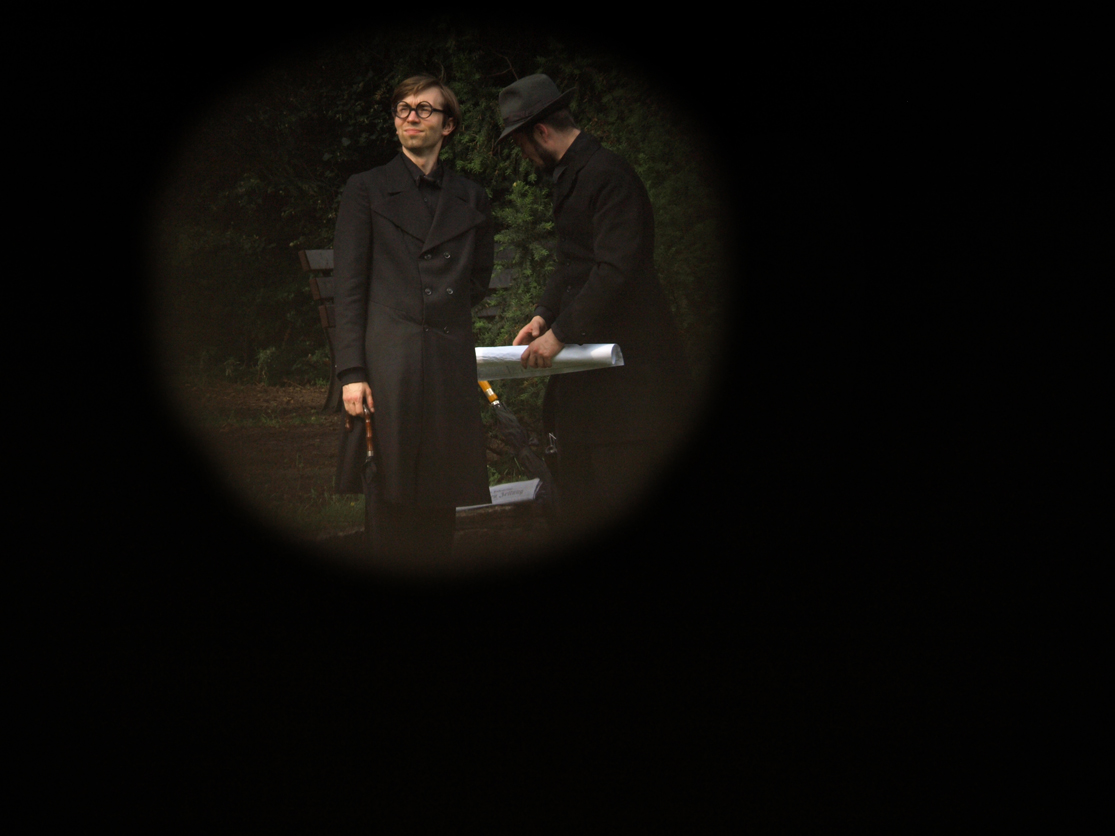
site-specific project in Pawilon Czterech Kopuł in Wrocław, PL
carried out during the 7th SURVIVAL Art Review 2009
starring: Łukasz Nawrocki as Hans Poelzig
and Łukasz Wasyliszyn as Max Berg
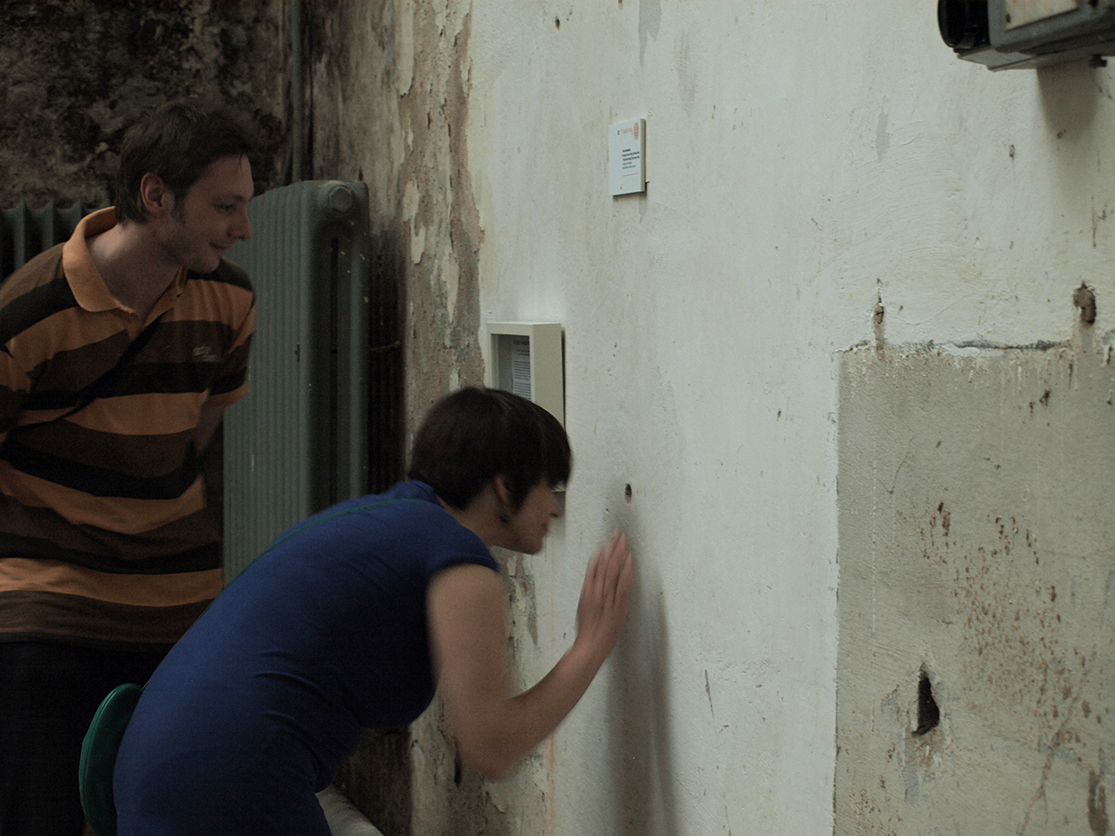
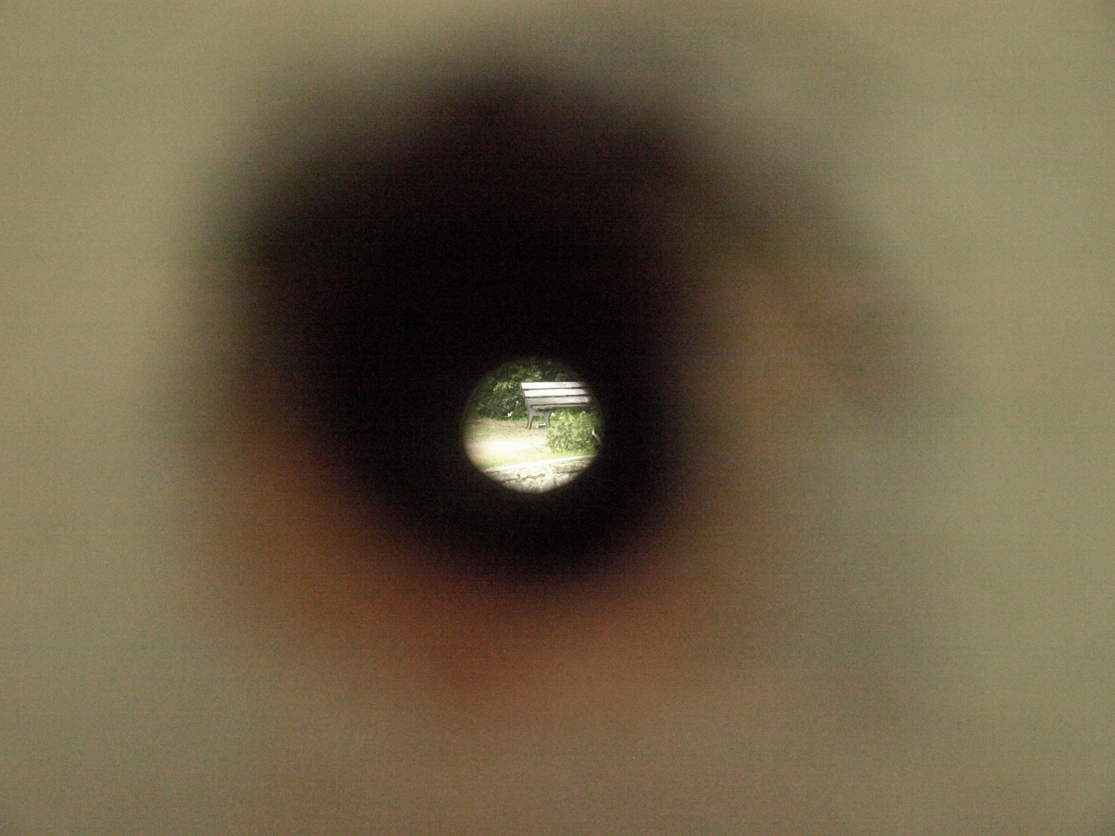
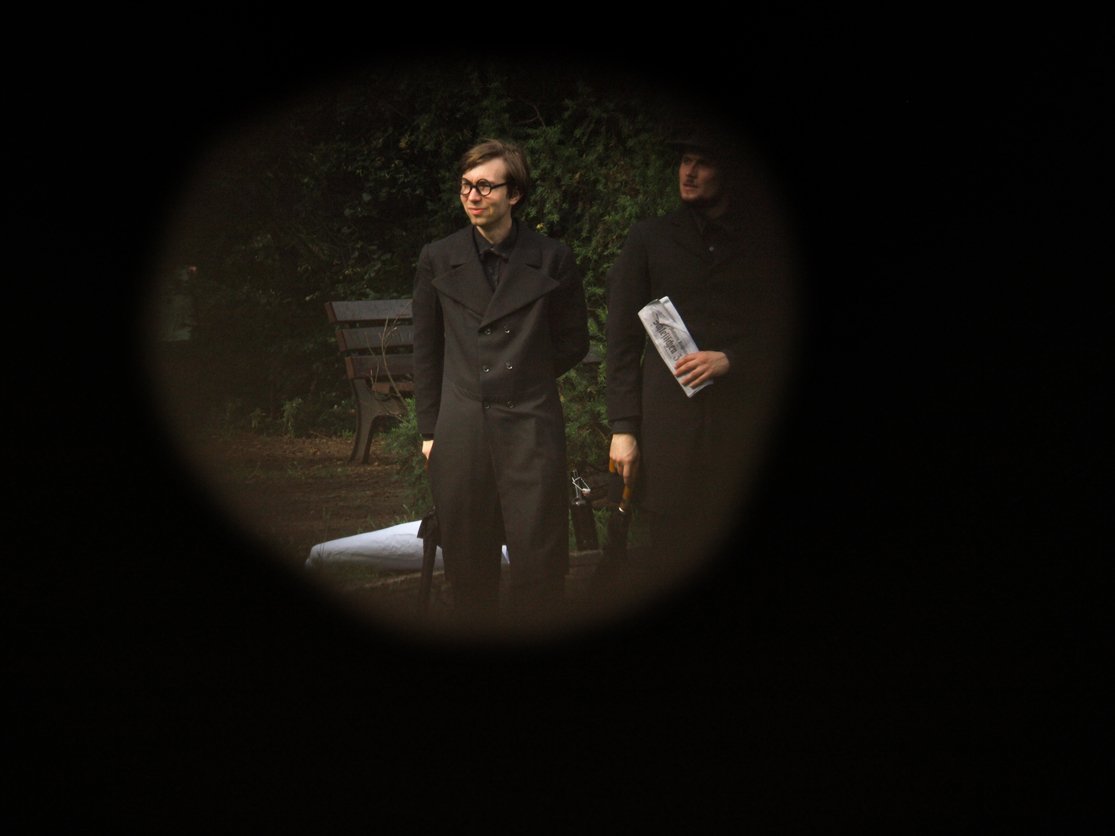
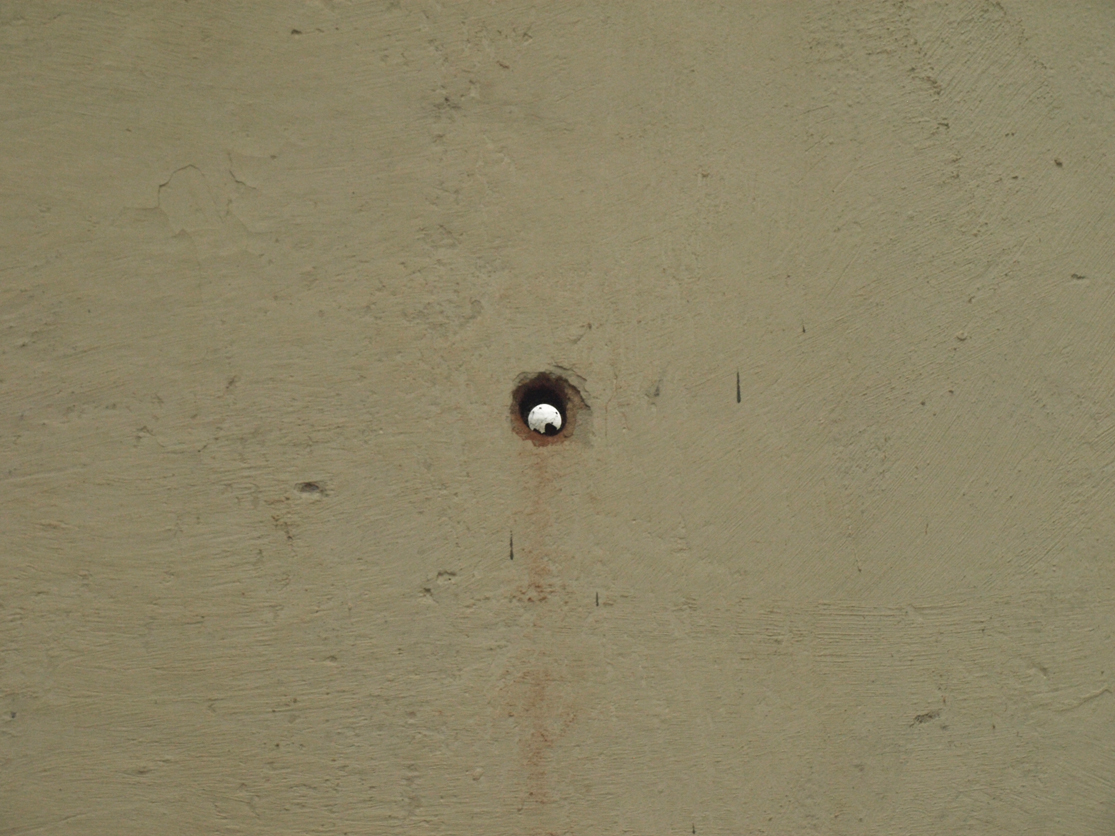
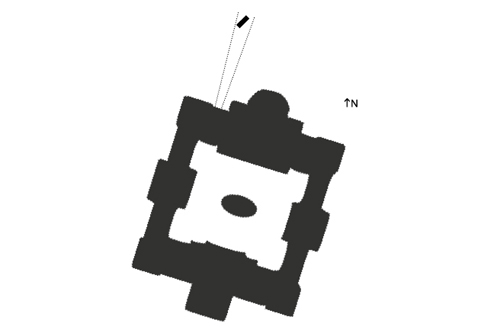
the placement of the hole and the direction of the view in the Four Domes Pavilion's plan
After the World War II Wrocław—former Breslau—was included into the borders of People’s Republic of Poland. The Four Domes Pavilion, designed by Hans Poelzig around 1912, after ’45 became a part of the state run motion picture studio Wytwórnia Filmów Fabularnych, where a lot of well-known Polish movies were formed. Transformation time in Poland was not glamorous for the Pavilion, which almost fell into ruin. Eventually renovated, since 2016 the building hosts the collection of contemporary art of Wrocław National Museum.
In 2009 the Pavilion was open to the public for a few summer days during 7th SURVIVAL Art Review. Then everyone could look out from the inside of the Pavilion. Through a small hole in the thick concrete wall one could see the closest surrounding of that part of the Pavilion—pergola and the park around.
Each full hour one could see through the hole, as in the photoplasticon, the ‘phantomes’ of two distinguished architects—Max Berg and Hans Poelzig—sitting on the bench or on the parapet and deliberating over the problems of buildings and showgrounds. A lot of designs by these architects had not been carried out before Nazism came to power, nor later.
![]()
Max Berg
& Hans Poelzig
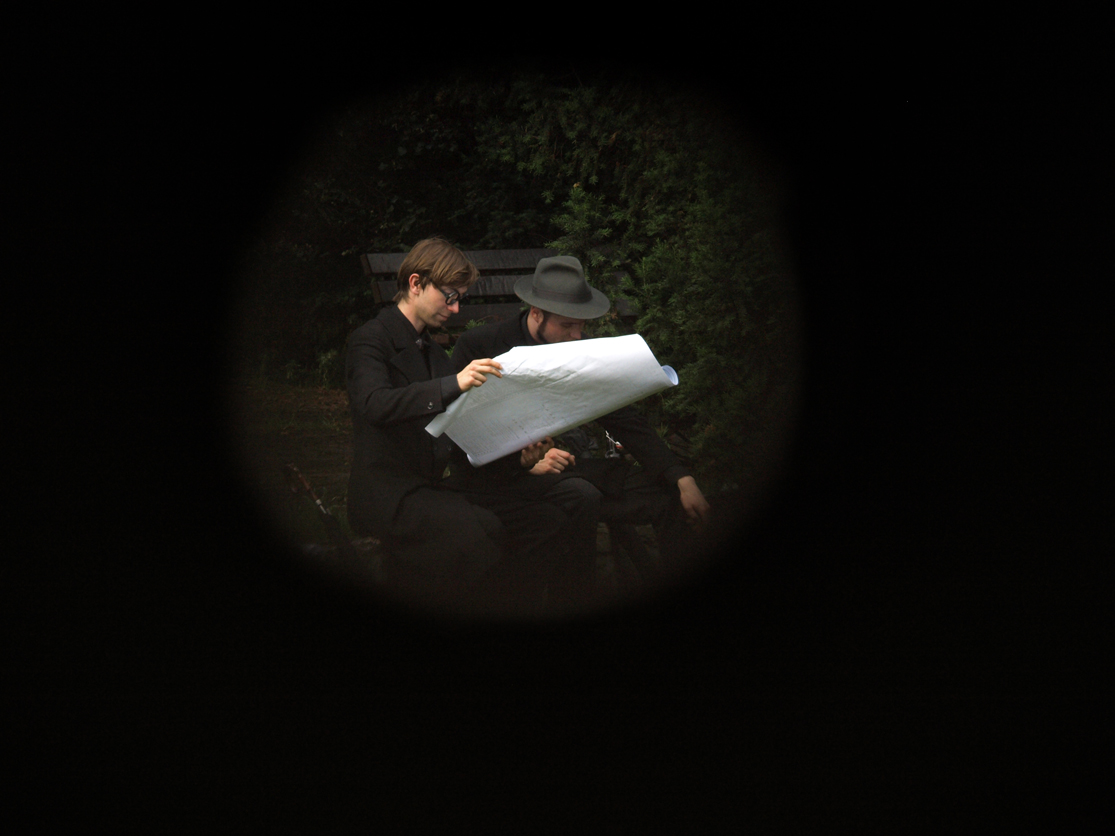
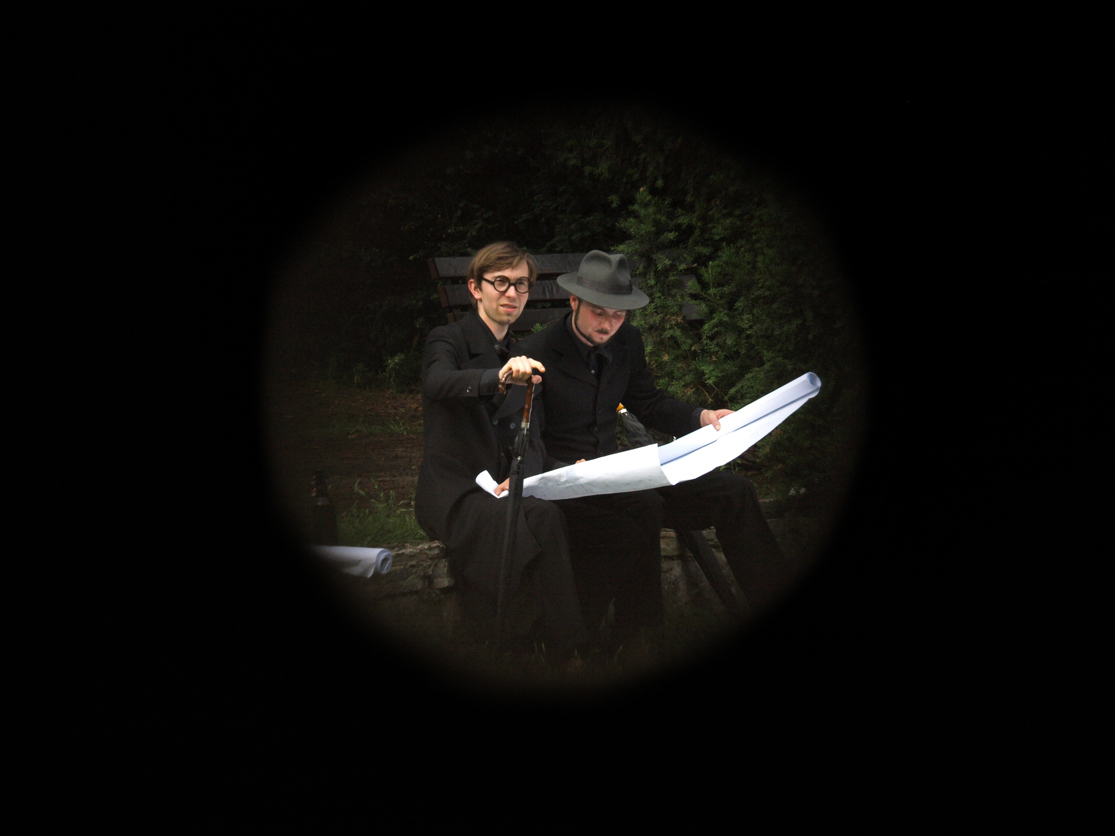
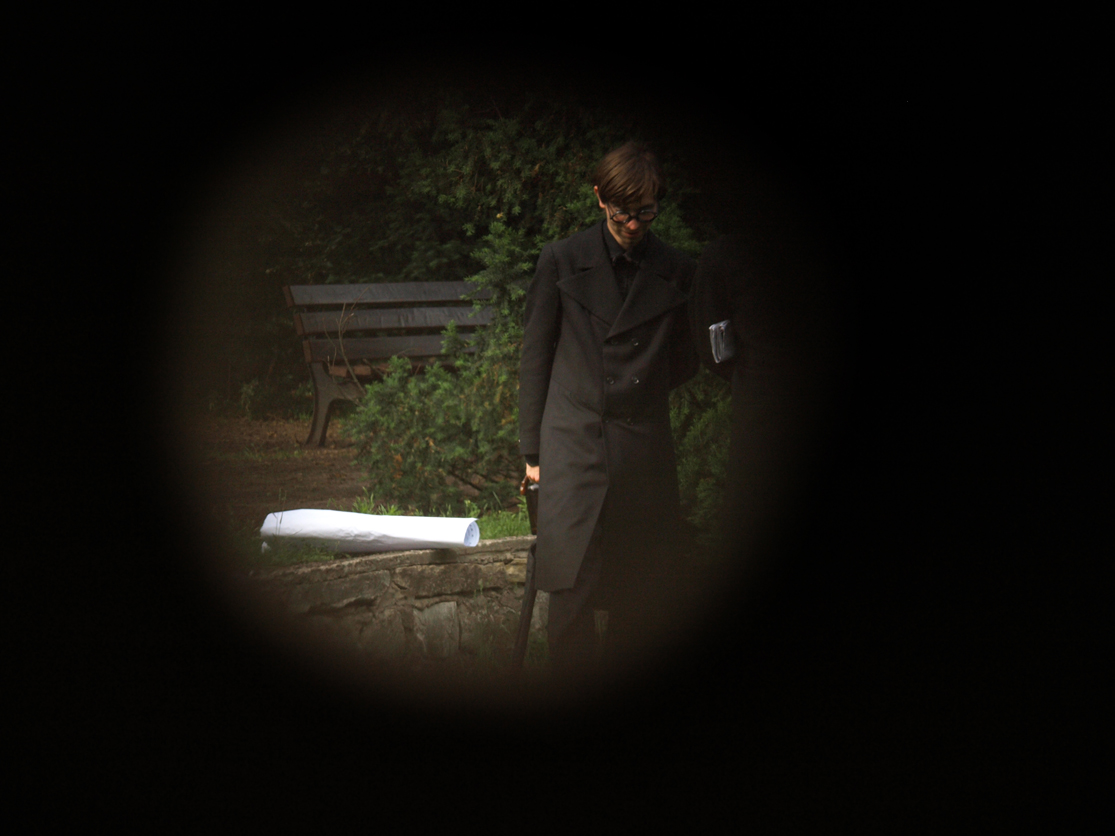
The Four Dome Pavilion has a classicist form typical for early modernism, nevertheless its meaning for the Wroclaw modernism is monumental, as are all other buildings designed by Poelzig and Max Berg—the co-author of modern vision of the urban planning of Wrocław (1919-1920), the architect of the Jahrhunderthalle (called People’s Hall during the times of the People’s Republic of Poland) and the showground around the Jahrhunderthalle and the Pavilion.
Specters of Max in the title of the project is a reference to the title of Jacques Derrida’s Spectres de Marx, and the names of Max Berg and Max Stirner, a theoretician of anarchy, who claimed that the concept of something ‘public’ is a specter, a phantasm of no specific form of existence. The concept of ‘specter’ comes from the first line of The Communist Manifesto: A specter is haunting Europe—the specter of communism, and refers to the idea of hauntology. The theme of specters and ghosts started to emerge in the face of a rundown of the modernist impulse. It indicates a paradoxical longing for modernist ideals of innovation and constant change.
Hauntology is based on the old, at the same time it indicates a longing for novelty and change. Modernist architecture was rejected by Nazism because it reduces meaning and therefore such a reduced architecture is not able to transmit the “national ideology”1. According to Krzysztof Nawratek, ‘modernist’ architecture is still blamed mainly for the reduction of meanings2, nowadays as well.
1 Kenneth Frampton, Modern Architecture, a Critical History,
Thames and Hudson, London 1990
2 Krzysztof Nawratek, Ideologie w przestrzeni, Universitas, Krakow 2005
The Four Dome Pavilion has a classicist form typical for early modernism, nevertheless its meaning for the Wroclaw modernism is monumental, as are all other buildings designed by Poelzig and Max Berg—the co-author of modern vision of the urban planning of Wrocław (1919-1920), the architect of the Jahrhunderthalle (called People’s Hall during the times of the People’s Republic of Poland) and the showground around the Jahrhunderthalle and the Pavilion.
Specters of Max in the title of the project is a reference to the title of Jacques Derrida’s Spectres de Marx, and the names of Max Berg and Max Stirner, a theoretician of anarchy, who claimed that the concept of something ‘public’ is a specter, a phantasm of no specific form of existence. The concept of ‘specter’ comes from the first line of The Communist Manifesto: A specter is haunting Europe—the specter of communism, and refers to the idea of hauntology. The theme of specters and ghosts started to emerge in the face of a rundown of the modernist impulse. It indicates a paradoxical longing for modernist ideals of innovation and constant change.
Hauntology is based on the old, at the same time it indicates a longing for novelty and change. Modernist architecture was rejected by Nazism because it reduces meaning and therefore such a reduced architecture is not able to transmit the “national ideology”1. According to Krzysztof Nawratek, ‘modernist’ architecture is still blamed mainly for the reduction of meanings2, nowadays as well.
1 Kenneth Frampton, Modern Architecture, a Critical History,
Thames and Hudson, London 1990
2 Krzysztof Nawratek, Ideologie w przestrzeni, Universitas, Krakow 2005
1 Kenneth Frampton, Modern Architecture, a Critical History,
Thames and Hudson, London 1990
2 Krzysztof Nawratek, Ideologie w przestrzeni, Universitas, Krakow 2005
